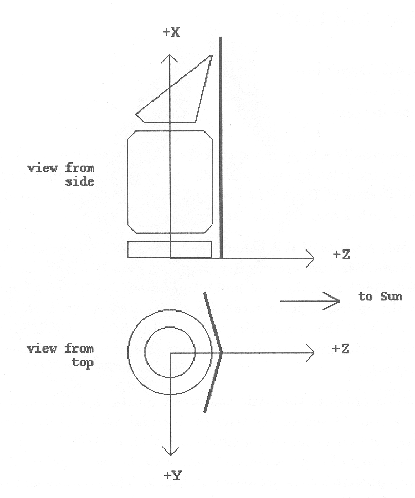
|
The Service Module (see Figure 3.1) supported the `activities' of the Payload Module, acting as the link between the telescope and the ground control system.
It included: the interface with the Ariane launch vehicle, located at the base of the Service Module; the array of solar cells, mounted on the sun-shield, providing the power of approximately 600 W required by the spacecraft; subsystems for thermal control, data handling, power conditioning, telemetry and telecommand; and the Attitude and Orbit Control Subsystem. The last provided the three-axis stabilised accuracy of a few arcseconds and also the raster pointing facilities needed for the mission. The spacecraft axes are shown in Figure 3.2.
The Attitude and Orbit Control Subsystem (AOCS) consisted of Sun (SAS) and Earth (ELS) Sensors, one of two Star-Trackers (STRs), a Quadrant Star Sensor on the telescope axis, gyros and reaction wheels. It used a hydrazine reaction control system. The telecommand rate was 2kbps while the data transmission rate from the satellite to the ground station, the downlink bit rate, was 32 kbps of which about 24kbps were dedicated to scientific instruments. There was no on-board storage of telemetry; thus, while operating scientifically, ISO had to be in continuous real-time contact with a ground station.
All `warm' electronics associated with the four scientific instruments were also housed in the Service Module. This was to minimise the amount of heat dissipated within the cryostat which, in turn, maximised the lifetime of the super-fluid helium.
Spacecrafts are normally not designed to minimise thermal
emission, rather they are designed with thermal balance
in mind. As a result, the Service Module, with its classical
spacecraft sub-systems, was a significant source of heat and
generated a considerable thermal gradient between the Service
Module and the Payload Module (normally in the region of 20![]() C).
C).
To prevent degradation of the effectiveness and lifetime of the cryostat, the Payload Module was thermally shielded from the Service Module by several different means: